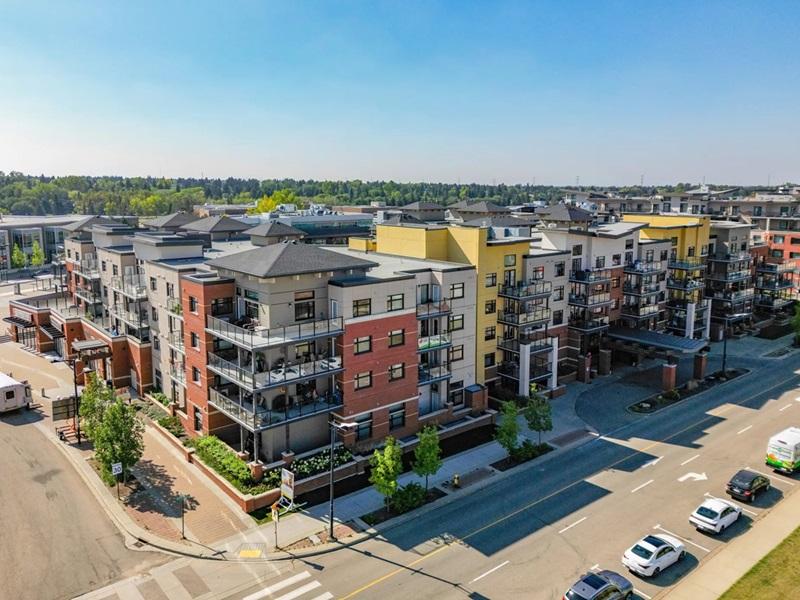
Scott Addison, president of Canadian brokerage services for Colliers International. (Courtesy Colliers International)
The COVID-19 pandemic has led to an increase in sublease office space in major Canadian cities in recent weeks, particularly Vancouver and Toronto. Market experts expect the trend to continue, and to expand to other cities as occupiers take stock of the coronavirus impact and future work habits.
According to a Colliers International report, obtained by RENX, Canada’s three largest employment centres – Toronto, Vancouver and Montreal – had a combined 863,000 square feet of new sublease space become available between March and May, of which 482,000 is considered immediately available.
The vast majority of that total, about 769,000 square feet, is in Toronto and Vancouver.
Montreal has had about 97,000 square feet added to the sublease market, Colliers says.
Scott Addison, president of Canadian brokerage services for Colliers, believes there are two key reasons for the trend. First, there is a more pessimistic economic view going forward.
“If you’re already bringing things onto the sublet market, you probably had something you recognized before the COVID hit, that you had too much space and you need to re-organize your office,” Addison said.
“That might have accelerated the decision.”
Second is the sudden, dramatic increase in employees working from home: “There will be an impact from that in the future. How large? We don’t know.”
The Colliers report says 47 per cent of office tenants believe their space needs will decrease: 56 per cent say it will be due to fewer employees; and 44 per cent attribute it to employees working from home.
It also projects a potential reduction in tenant office space needs of 8.5 per cent over the next eight years.
Vancouver, Toronto markets “super strong”
Addison said companies which took on space anticipating near-term growth are scaling back those plans. He cited tech companies in particular, who are leading the work-from-home trend.
Toronto and Vancouver also both have significant new buildings which will be delivered during the next three years. This creates a sublet market as a flight to quality takes place.
While the amount of sublet space is growing, he noted Vancouver and Toronto are coming off of “super strong” markets with record-low vacancy.
It has been difficult to find any tenant space in the downtown cores and large blocks of space remain very scarce in both markets.

Joe Almeida, managing director and principal at Avison Young in Toronto. (Courtesy Avison Young)
Joe Almeida, managing director and principal at Avison Young in Toronto, expects considerably more sublease space to become available.
“No question it’s having an impact. We’re about double the amount of sublease space in the last 12 months,” he said. “But it is rising, I could easily see it double (again) in the next two months as we come out of this.”
He also cited several factors, though so far he hasn’t seen major blocks of space opening up.
“One is tenants that took some space and now have rethought that particular requirement, (so) you’re starting to see space that has never even been occupied come to the sublease market,” Almeida said. “Not very large, we’re talking about small- and medium-sized spaces.
“Then you’re also seeing smaller tenants who are rethinking their business . . . and either trying to see if they can get out from under a lease, or just re-focusing their business into smaller space down the road once they get the sublease.”
Toronto office market data
The Colliers report says 273,000 square feet of new sublease listings came to market in May in Toronto, and a total of 551,000 square feet of new space was listed across the GTA from March to May. Fifty-seven per cent was class-A space and 58 per cent was in the downtown market.
With leasing activity also down, the effect is cumulative.
“Although this has yet to cause any major ripples for the 250-million-square-foot office market, the addition of new space has resulted in Downtown Toronto’s sublease availability to double within the past three months,” the report states.
“The Downtown West and Downtown South submarkets were the largest contributors of this space, respectively listing 139,000 square feet and 72,000 square feet.
“This new availability is significant to these two submarkets, which had Q1 2020 availability rates of only 2.0 per cent and 2.8 per cent.”
The Altus data is similar, showing a jump from 705,844 square feet of available sublease space in Q1 2020 (20 per cent of available space), to its current 1.1 million square feet (26.1 per cent of available space).
CBRE, in a Q2 report released today, lists the city with 650,000 square feet of vacant office space available for sublet, an 86 per cent jump from its Q1 report. It reports a downtown vacancy of 2.7 per cent, and a $1.53 reduction in downtown class-A net rents, to $35.38 per square foot.
Vancouver office market data
Vancouver is being impacted by the same trends, though some of the data is more disparate.
In the Greater Vancouver Area between March and May, the Colliers report says 218,000 square feet of sublease space became available.
“The majority of sublease space coming online in Vancouver is attributed to the downtown market, which, like Toronto, has seen its sublease availability double. Unlike Toronto, however, the majority of new space is class-B, representing 67 per cent of new sublease square feet,” the report states.
“Downtown Vancouver is seeing an increase in sublease availability volume over direct availability and will likely continue this upward trend in the upcoming months. The majority of downtown sublease availabilities fall between the 5,000-to-10,000-square-foot range and 52 per cent is comprised of class-B space.”
According to Altus Group data, the downtown office market went from 215,374 square feet of available sublease space in Q1 2020 (23 per cent of the total available space), to 526,154 square feet currently (38 per cent of total available space).
CBRE’s Tony Quattrin told RENX last week sublease space in Vancouver was up even more dramatically, to more than 500,000 square feet and from 37 blocks of space to 90.
“In Vancouver and Toronto, we’re definitely seeing it. In the other markets, we will see it but we’re not seeing it yet,” said Ray Wong, the vice-president of data operations with Altus.
“I think right now with the pause we’ve had in the market over the last three or four months, companies in partnership with their HR departments are reassessing their space requirements.”
Leasing activity has declined

Ray Wong, vice-president of data operations for Altus Group’s Data Solutions division. (Courtesy Altus)
“We know that in Toronto the lease activity is off by half and it’s probably the same number in Vancouver,” Wong added.
Wong said the decline in leasing activity could also be attributed, at least in part, to government restrictions which prevented potential tenants from visiting buildings and touring available space.
He said most of the sublease space is in class-A and class-B buildings. However, so far Wong said it’s not impacting rental rates.
“Because of the tightness of the market (in Vancouver and Toronto), some of the tenants believe that they’ll get the full rate . . . The office availability rate is still relatively tight in those two markets,” he explained. “So coming out sooner, they have a better chance of recovering almost all, if not all, of their rental rate obligations.”
Other major Canadian cities
Elsewhere, Altus data shows the amount of sublet space on the market compared to total available space has risen in recent weeks, with the exception of Ottawa:
* 25.2 per cent Calgary (24.7 per cent in the first quarter);
* 13.1 per cent Edmonton (12.6 per cent in Q1);
* 5.1 per cent Ottawa (6.9 per cent in Q1);
* and 5.9 per cent Montreal (5.5 per cent in Q1).
For Calgary, Wong said, there’s also a “shadow” space market due to the extended downturn in the Alberta economy. It represents space that is not being used by tenants, but is also not being actively marketed.
“The downtown availability rate we have at 25.2 per cent and that’s probably north of 30 (per cent) if you look at the space that people don’t need, but it’s not on the market,” Wong explained.







